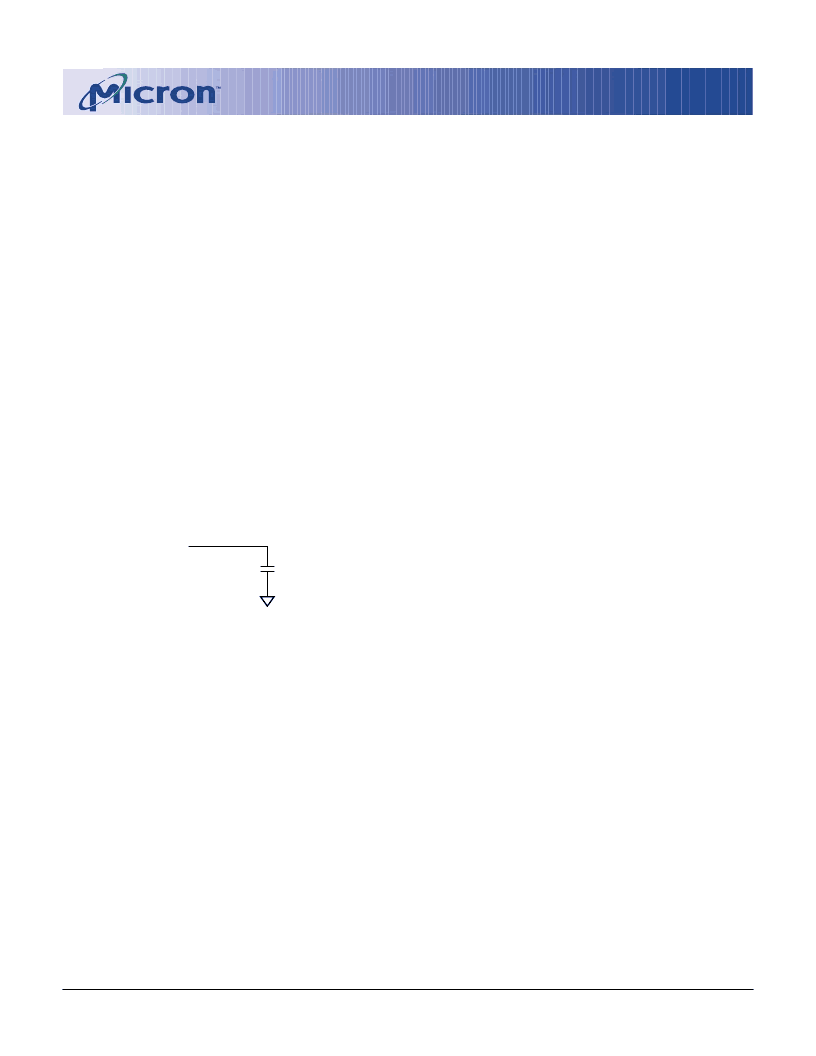- 您現(xiàn)在的位置:買(mǎi)賣IC網(wǎng) > PDF目錄384755 > MT48LC2M32B2 (Micron Technology, Inc.) SYNCHRONOUS DRAM PDF資料下載
參數(shù)資料
| 型號(hào): | MT48LC2M32B2 |
| 廠商: | Micron Technology, Inc. |
| 英文描述: | SYNCHRONOUS DRAM |
| 中文描述: | 同步DRAM |
| 文件頁(yè)數(shù): | 35/53頁(yè) |
| 文件大小: | 1818K |
| 代理商: | MT48LC2M32B2 |
第1頁(yè)第2頁(yè)第3頁(yè)第4頁(yè)第5頁(yè)第6頁(yè)第7頁(yè)第8頁(yè)第9頁(yè)第10頁(yè)第11頁(yè)第12頁(yè)第13頁(yè)第14頁(yè)第15頁(yè)第16頁(yè)第17頁(yè)第18頁(yè)第19頁(yè)第20頁(yè)第21頁(yè)第22頁(yè)第23頁(yè)第24頁(yè)第25頁(yè)第26頁(yè)第27頁(yè)第28頁(yè)第29頁(yè)第30頁(yè)第31頁(yè)第32頁(yè)第33頁(yè)第34頁(yè)當(dāng)前第35頁(yè)第36頁(yè)第37頁(yè)第38頁(yè)第39頁(yè)第40頁(yè)第41頁(yè)第42頁(yè)第43頁(yè)第44頁(yè)第45頁(yè)第46頁(yè)第47頁(yè)第48頁(yè)第49頁(yè)第50頁(yè)第51頁(yè)第52頁(yè)第53頁(yè)

35
64Mb: x32 SDRAM
64MSDRAMx32_5.p65 – Rev. B; Pub. 6/02
Micron Technology, Inc., reserves the right to change products or specifications without notice.
2002, Micron Technology, Inc.
64Mb: x32
SDRAM
13. I
DD
specifications are tested after the device is prop-
erly initialized.
14. Timing actually specified by
t
CKS; clock(s) speci-
fied as a reference only at minimum cycle rate.
15. Timing actually specified by
t
WR plus
t
RP; clock(s)
specified as a reference only at minimum cycle rate.
16. Timing actually specified by
t
WR.
17. Required clocks are specified by JEDEC function-
ality and are not dependent on any timing param-
eter.
18. The I
DD
current will decrease as the CAS latency is
reduced. This is due to the fact that the maximum
cycle rate is slower as the CAS latency is reduced.
19. Address transitions average one transition every
two clocks.
20. CLK must be toggled a minimum of two times dur-
ing this period.
21. Based on
t
CK = 143 MHz for -7, 166 MHz for -6,
183 MHz for -55, and 200 MHz for -5.
22. V
IH
overshoot: V
IH
(MAX) = V
DD
Q + 1.2V for a pulse
width
≤
3ns, and the pulse width cannot be greater
than one third of the cycle rate. V
IL
undershoot:
V
IL
(MIN) = -1.2V for a pulse width
≤
3ns, and the
pulse width cannot be greater than one third of the
cycle rate.
23. The clock frequency must remain constant during
access or precharge states (READ, WRITE, includ-
ing
t
WR, and PRECHARGE commands). CKE may
be used to reduce the data rate.
24. Auto precharge mode only.
25. JEDEC and PC100 specify three clocks.
26.
t
CK = 7ns for -7, 6ns for -6, 5.5ns for -5.5, and
5ns for -5.
27. V
DD
(MIN) = 3.135V for -6, -55, and -5 speed grades.
28. Check factory for availability of specially screened
devices having
t
WR = 10ns.
t
WR = 1
t
CK for 100 MHz
and slower (
t
CK = 10ns and higher) in manual
precharge.
NOTES
1.
All voltages referenced to V
SS
.
2.
This parameter is sampled. V
DD
, V
DD
Q = +3.3V;
f = 1 MHz, T
A
= 25°C; pin under test biased at 1.4V.
AC can range from 0pF to 6pF.
3.
I
DD
is dependent on output loading and cycle rates.
Specified values are obtained with minimum cycle
time and the outputs open.
4.
Enables on-chip refresh and address counters.
5.
The minimum specifications are used only to indi-
cate cycle time at which proper operation over the
full temperature range (0°C
≤
T
A
≤
+
70°C and
-40°C
≤
T
A
≤
+
85°C for IT parts) is ensured.
6.
An initial pause of 100μs is required after power-
up, followed by two AUTO REFRESH commands,
before proper device operation is ensured. (V
DD
and V
DD
Q must be powered up simultaneously. V
SS
and V
SS
Q must be at same potential.) The two
AUTO REFRESH command wake-ups should be
repeated any time the
t
REF refresh requirement is
exceeded.
7.
AC characteristics assume
t
T = 1ns.
8.
In addition to meeting the transition rate specifi-
cation, the clock and CKE must transit between V
IH
and V
IL
(or between V
IL
and V
IH
) in a monotonic
manner.
Q
9.
10.
t
HZ defines the time at which the output achieves
the open circuit condition; it is not a reference to
V
OH
or V
OL
. The last valid data element will meet
t
OH before going High-Z.
11. AC timing and I
DD
tests have V
IL
= .25 and V
IH
= 2.75,
with timing referenced to 1.5V crossover point.
12. Other input signals are allowed to transition no
more than once in any two-clock period and are
otherwise at valid V
IH
or V
IL
levels.
Outputs measured at 1.5V with equivalent load:
30pF
相關(guān)PDF資料 |
PDF描述 |
|---|---|
| MT48LC32M8A2 | SYNCHRONOUS DRAM |
| MT48LC16M16A2 | SYNCHRONOUS DRAM |
| MT48LC64M4A2 | SYNCHRONOUS DRAM |
| MT48LC4M32B2 | SYNCHRONOUS DRAM |
| MT48LC4M32LFFC | SYNCHRONOUS DRAM |
相關(guān)代理商/技術(shù)參數(shù) |
參數(shù)描述 |
|---|---|
| MT48LC2M32B2-6G | 制造商:Micron Technology Inc 功能描述: |
發(fā)布緊急采購(gòu),3分鐘左右您將得到回復(fù)。